Dear reader: This article contains links to products and services that I may be compensated for, at no extra cost to you.
Almost exactly 10 years ago as I write this, I left my home in Canada to go traveling and teach English in China. I had traveled extensively before that, but this was the first time I was leaving on a one-way ticket. It was a path that eventually led me to Taiwan, where I still live today.
I’m writing this post as a throwback to a decade ago, and to recall one of my first and most incredible experiences in China: climbing and spending a night on the peak of Tai Shan, China’s most sacred peak, which is considered one of the great pilgrimages of the world.
And it wasn’t just any night, but Chinese New Year’s Eve, and the year was 2008, the same that Beijing hosted the Summer Olympics. I combined my Tai Shan hike with a visit to nearby Qufu, the hometown of Confucius during a one-month trip of backpacking around China.
This post will be more of a personal account than a how-to guide, considering things have probably changed a lot since then. Moreover, my memory of the trip is spotty, but I’ve relied on a blog post I wrote right after the trip. These pictures were taken well before I got my first DSLR and knew much about technical aspects of photography, but looking back at them, I’d like to think I had already developed a decent eye at that point.
If you would like to visit Tai Shan on a tour, this full-day Mount Tai tour takes you gets you right to the top by shuttle bus and cable car, saving you time on logistics and giving you lots of time to explore the collection of temples and sights on the summit.
Table of Contents
Shandong: a Sage, a Sacred Peak, and a Beer
Before I started teaching English in Shenzhen, I wanted to see a little more of the country (I had only been to Sichuan previously). I traveled to Beijing to see the Great Wall (on of those places you have to see in your lifetime!) and then to Shandong province southeast of the capital.
Shandong has been traditionally known for its river (the Yellow river empties into the sea here), it’s sage (Confucius was born and rests here today), and its mountain (Tai Shan, or Mount Tai, is the holiest of the five sacred peaks of China (五嶽). Today, it is also famous for Qingdao (Tsingtao), which many would consider the national brew (Snow beer is technically the number 1 by sales volume). See here if you would like to visit the Qingdao brewery!
Since I was traveling from Beijing to Shandong just before Chinese New Year, I had some difficulty getting out of the capital, and eventually got a seat on one of the strangest buses I’ve ever ridden.
There were no seats but three front-to-back rows of bunk beds, and once passengers boarded, took off their shoes to air out their (very stinky) socks, and laid on their bunks, most proceeded to smoke cigarettes for the duration of the ride, including the driver. Welcome to China!
Hiking up Tai Shan (Mount Tai)

In Chinese history, five mountains have traditionally been designated as the Great Five, and each is associated with a direction: Heng Shan (恆山) in Shanxi is the Northern Great Mountain, Song Shan (嵩山) in Henan is the Centre, Heng Shan (衡山) in Hunan is the Southern, Hua Shan (華山) in Shaanxi is the Western, and Tai Shan (泰山) is the Eastern.
Tai Shan is considered the holiest of the five, and due to its historical and cultural significance, it is the most climbed mountain in China, with over 6 million people visiting or climbing it per year. Note that there are also four (different) sacred Chinese peaks of Buddhism, another four of Taoism, and also some very famous mountains (such as Huang Shan in Anhui) that somehow didn’t make any of the lists.
Mount Tai has been a significant place of worship for over 3000 years. Confucius and Mao have climbed it, to name a few, and emperors used to make sacrifices to heaven from its summit. It is sacred to Buddhists and Taoists alike, and in this nation of mountain lovers, its importance cannot be overemphasized. In fact, the Chinese word for pilgrimage, chaosheng (朝聖), is a shortened version of 朝拜圣山, which means “paying respect to a holy mountain.”
The peak is a modest 1545 meters, and it takes about four hours to scale the 6660 steps to the summit. And here’s where I come in with my shameful confession: at the last minute, I decided I just didn’t have it in me to walk up all those stairs that day, and I took the gondola to the summit (I did walk DOWN the mountain the next day, and I was very happy with my decision to do it like this; see below).
This actually involved a minibus ride from Tianwei Village, the traditional starting point of the Western route up Tai Shan, half way up to the mountain to the Midway Gate to Heaven, from where the cable car completes the ascent. Note that this is not the only cable car on the mountain.
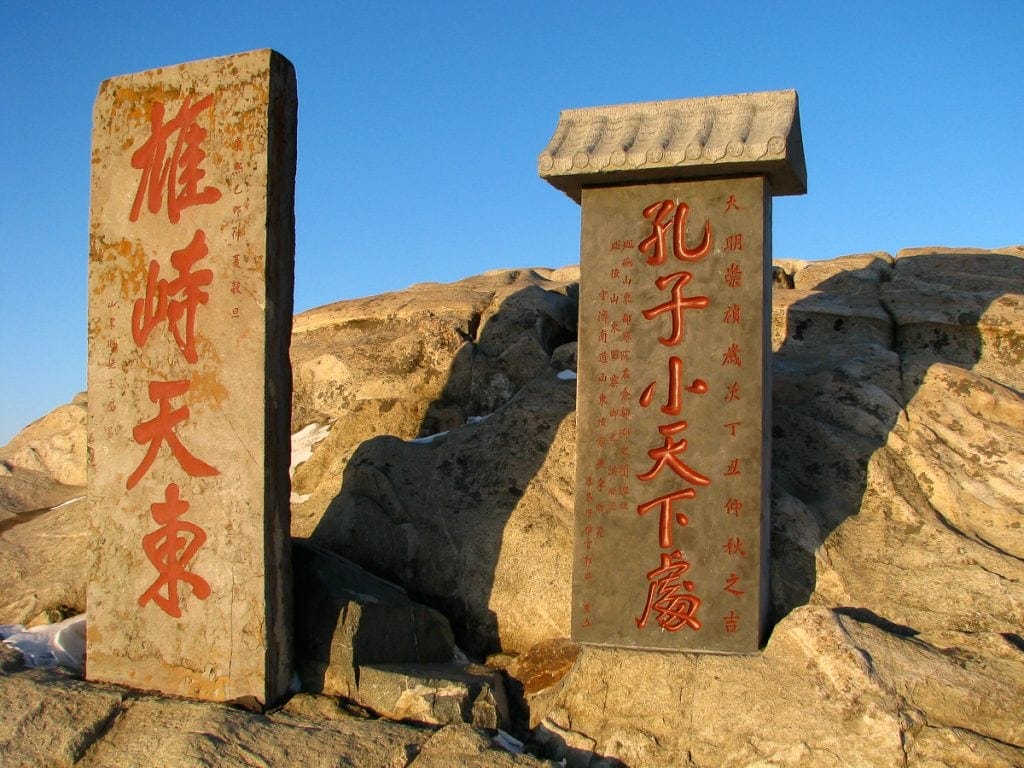

Spending the Night on the Peak of Tai Shan
My memory of the layout of the summit is too spotty to describe in detail, but I do recall it covers quite a large area. There are several accommodations along Tian Jie (Heavenly Road), as well as Buddhist, Taoist, and Confucian Temples. The Jade Emperor Temple sits atop the actual peak of the mountain, and the nearby North Prayer Rock is the traditional spot for viewing the mountain’s famed sunrises.

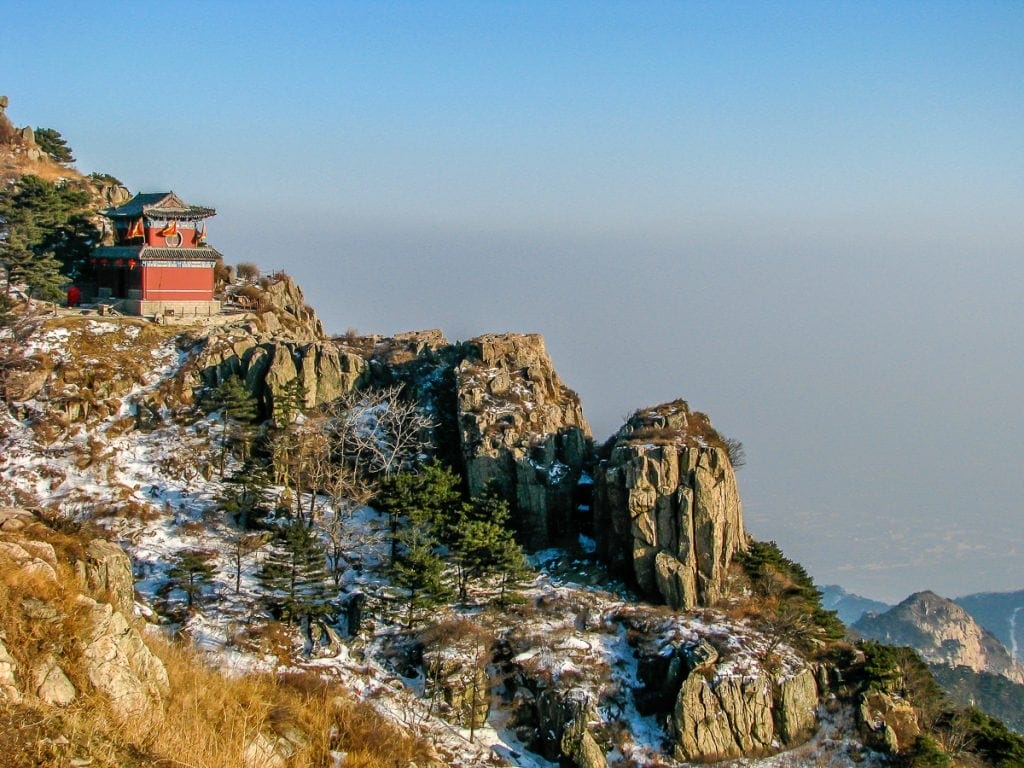
After checking into the cheapest place I could find, I explored the peak and watched a spectacular sunset from various vantage points.
It was COLD up there; I recall that my fingers were freezing while taking pictures to a point that I couldn’t stay out for very long, but I pushed it as long as I could, because every position, angle, or vantage point up there provided glimpses of scenes that are the stuff of classical Chinese legends and have inspired artists and travelers for millennia.
To add to the surreal visuals, I could observe (and just barely hear) hundreds of fireworks being set off on the plain far below, for it was the evening of Chinese New Year’s Eve. This was the first of many Chinese New Years I would welcome in this part of the world, but will always remain the most magical.
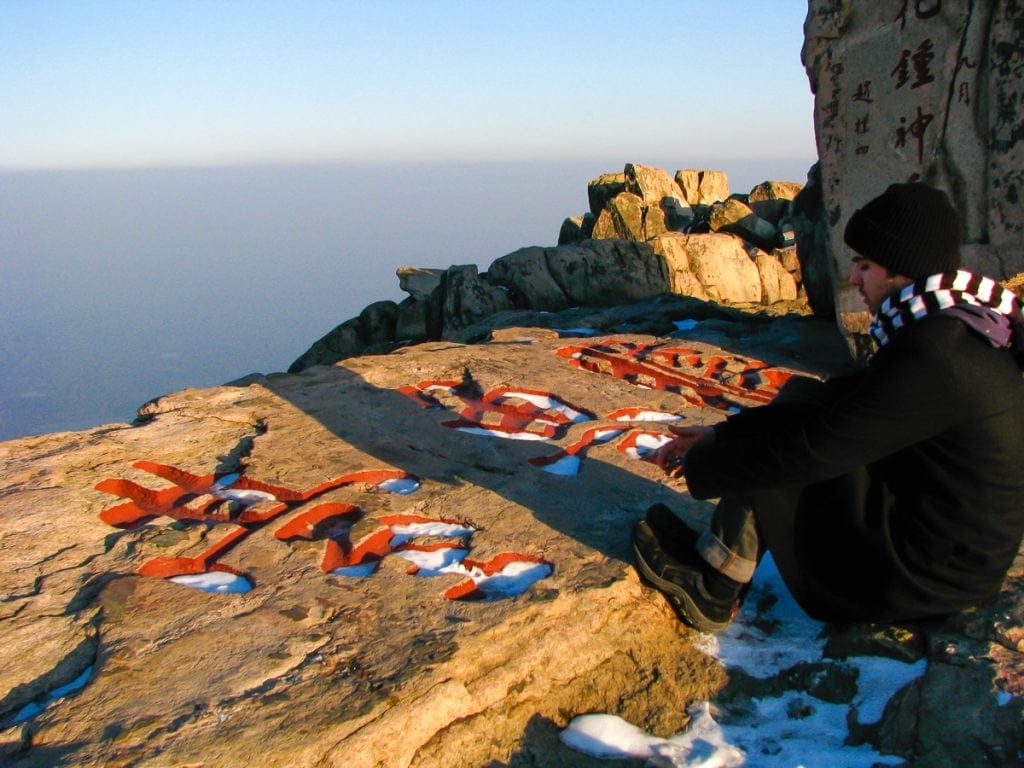

The other thing that stands out my memory of that night was the fact that my room was so freezing that I actually pulled the little space heated they provided right up to my bed and positioned my quilt over it so that it would blow hot air directly under my blanket.
And I’d like to point out that I grew up in a very cold city, and my parents would often turn off the heat at night to save money, but that freezing night up on Tai Shan was incomparable.
In the morning I got up early to witness the famed sunrise, but you can’t always have it all; it was mostly clouded over, but the phenomenal sunset the night before more than made up for it.

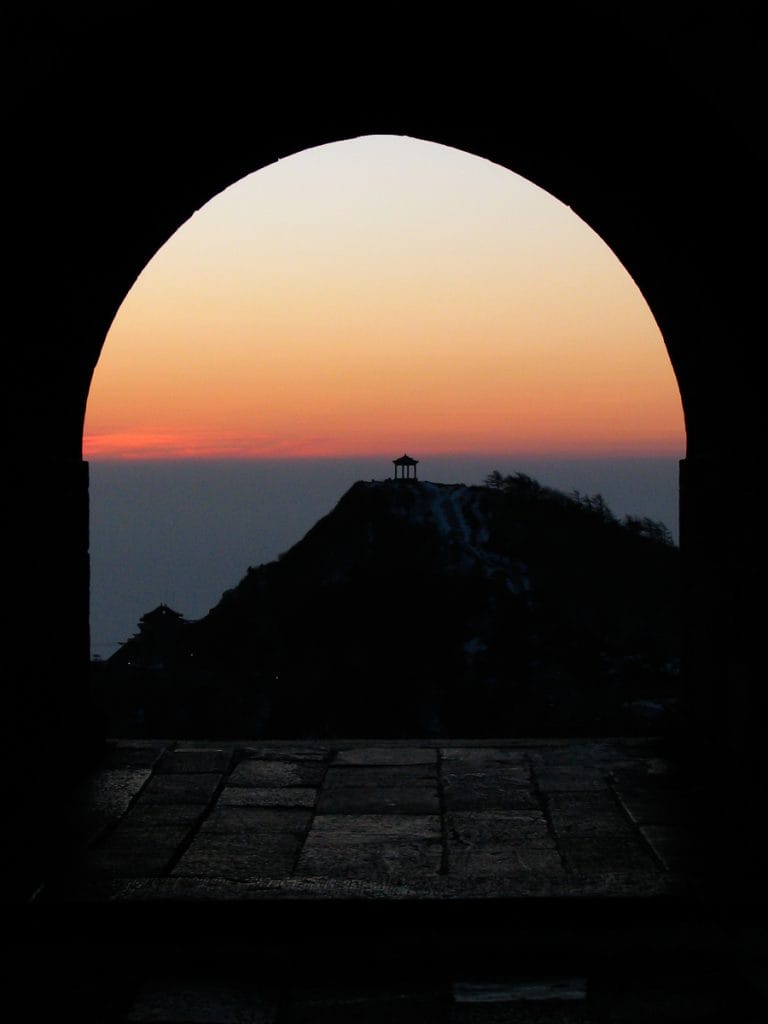

Hiking Down Tai Shan



I had half expected there to not be too many people on Tai Shan on New Year’s Day, a day people traditionally spend at home with their families and visiting their local temple. But apparently walking up Tai Shan is also a thing to do on New Year’s Day, because there were a TON of people walking up the mountain as I walked down.
It could also be that in China, there are just a ton of people pretty much everywhere you go, but definitely there was a special, joyous mood in the air that day. There was just as much laughter as huffing and puffing on those 6660 steps, and people hauled enormous incense sticks up the mountain to burn at the various temples.
I felt blessed to be going against the traffic and in a downhill direction. It really allowed me to take in the immensity of the mass of people, and soak up their devotional spirit, without being so fatigued myself to appreciate it, plus the combination of endless stairs and having to weave between people the whole way up would have driven me nuts. The descent was ideal for practicing my meditation for travelers.
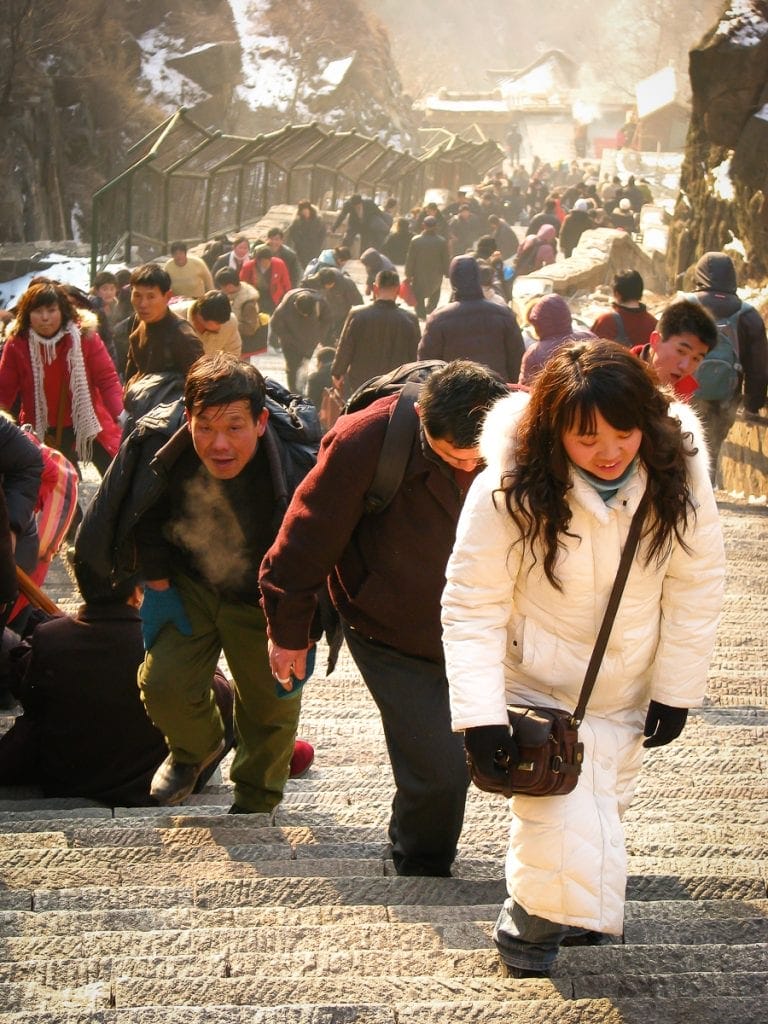



When I reached the bottom and then returned to the town of Tai An, the joyous atmosphere persisted. People and parades occupied the streets, giving me an awesome sense of completion of my Tai Shan visit.
Next, I visited Dai Temple, a pilgrimage stop for Tai Shan and the most important temple in the area.
After, I decided to splurge on a hotel room that cost about $40 and was several steps up from where I’d stayed the last few nights (I don’t remember what I paid on Tai Shan peak. It might have been more, but the hotel was very basic, and for several nights before that, I’d been staying in budget dives under the equivalent of $10).
I was tired of being cold and the room had a Jacuzzi, not to mention every pre-packaged hotel cosmetic and toiletry known to man!






Very nice travel. Amazing pictures! I am living in Tai’an, if you come again, let me know.
Great, thank you, and will do!
I climb the mountain from bottom to top when I was 75 y
Great experience
Very impressive!